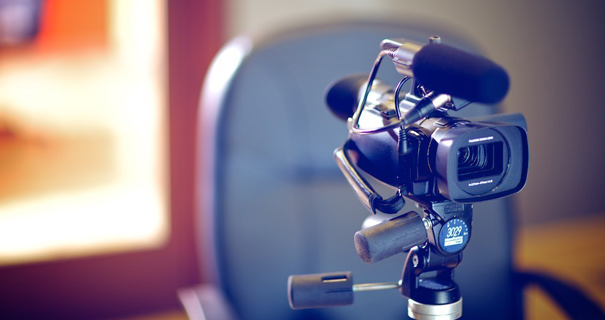Key Strategies for Creating Winning Trial Presentations in Court
The Power of Visuals in Test Presentations for a Winning Debate
The assimilation of visuals in test discussions has emerged as a vital variable in effectively communicating intricate debates to jurors. By utilizing various forms of visual help-- be it diagrams, photos, or animations-- attorneys can improve understanding and retention, inevitably forming the court's assumption of the case.
Importance of Visuals in Trials
In lots of lawful setups, visuals play a crucial duty in boosting the performance of test discussions. The assimilation of aesthetic aspects can substantially influence jurors' understanding and retention of complicated info, thus shaping their assumptions and choices. Visuals, such as charts, diagrams, and pictures, can simplify detailed stories, making them a lot more available and engaging.
Furthermore, the human mind procedures aesthetic details much more effectively than text, which emphasizes the relevance of integrating visuals right into legal arguments. By converting thick legal principles into visual styles, attorneys can facilitate more clear interaction, guaranteeing that bottom lines are not overlooked throughout trials.
Furthermore, visuals serve to involve jurors on a psychological level, fostering a connection to the instance that words alone may fall short to accomplish. The strategic use visuals can stimulate empathy, motivating jurors to consider the human facets of the case.
Eventually, the importance of visuals in trials exists in their ability to improve quality, improve juror interaction, and reinforce the narrative being offered. This potent combination is essential for crafting convincing debates that resonate with jurors and influence the end result of legal procedures.
Kinds of Visuals to Use
Reliable trial presentations can substantially take advantage of a variety of visual devices that deal with different facets of the instance. trial presentations. Utilizing representations and graphes can properly break down complicated information, making it a lot more absorbable for jurors. As an example, flowcharts can illustrate the sequence of occasions, while bar chart may succinctly compare relevant data points.

Animations and simulations can likewise play a crucial function, specifically in instances including technological information or intricate situations. These visuals can dynamically stand for procedures or activities, offering clearness and involvement that fixed images may not accomplish.
Furthermore, infographics combine text and visuals to summarize important info successfully. They can provide timelines, stats, and considerable instance factors in an aesthetically enticing fashion, making it less complicated for jurors to adhere to the debate.
Enhancing Understanding and Retention

Enhancing understanding and retention during trial presentations is essential for ensuring that jurors grasp the essential elements of an instance. Visual aids work as effective tools in this regard, converting complicated info into conveniently absorbable formats. By utilizing graphes, representations, and infographics, attorneys can simplify complex data and highlight vital points that may or else be ignored.
Research studies have actually revealed that individuals preserve details substantially better when it is offered visually. This is specifically significant in a trial setup, where jurors may be bewildered by the quantity of evidence and testament. By tactically including visuals, attorneys can route jurors' interest to one of the most vital facets of the situation, enhancing their understanding and memory of the material provided.

Creating Involving Presentations
Exciting jurors' interest throughout trial discussions is necessary for conveying an engaging narrative. Involving discussions take advantage of aesthetic elements to develop an unforgettable experience that reverberates with jurors. The calculated use graphics, animations, and video clips can elucidate complicated information, making it a lot more accessible and relatable.

In addition, integrating storytelling methods can enhance involvement. Providing proof in a sensible sequence that constructs emotional allure permits jurors to get in touch with the material on a personal degree. Diverse presentation layouts, such as incorporating brief video clips or interactive aspects, can also endure find out here interest and focus throughout the trial.
Eventually, an engaging presentation cultivates a much more extensive understanding of the case, making it possible for jurors to better value the arguments existing and leading to an extra favorable result.
Case Research Studies and Success Stories
Countless situation studies highlight the considerable influence of visuals in trial discussions, demonstrating their capacity to influence juror assumptions and ultimately the results of instances. As an example, a significant case including an injury claim illustrated exactly how making use of a 3D computer animation of the accident scene clarified complicated information. Jurors reported feeling more educated and compassionate, dramatically swaying their decision for the plaintiff.
In one more instance, a company lawsuits case utilized infographics to present monetary information and timelines, making detailed details accessible. The visual depiction made it possible for jurors to realize the subtleties of the instance better than spoken descriptions alone. trial presentations. As a result, the jury returned a decision that went beyond the customer's assumptions
The compelling visuals not just assisted in creating uncertainty however also reverberated emotionally with jurors, leading to a pardon. These success stories emphasize the necessity of incorporating visuals into test presentations, as they boost understanding, retention, and eventually, the persuasive power of legal arguments.
Final Thought
In final thought, the critical incorporation of visuals in trial discussions dramatically enhances jurors' understanding and retention of intricate information. Involving discussions, supported by engaging instance studies, show the profound influence that visuals can have on persuasive interaction.